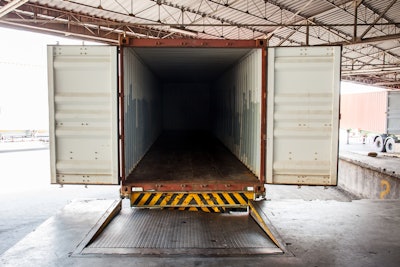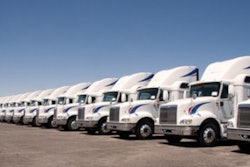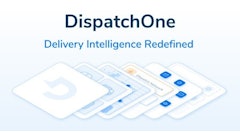
Have your last-mile delivery costs skyrocketed over the last few years?
Changing consumer behavior and increased shipping costs are taking a toll on U.S. businesses in every industry. The growth of e-commerce has led to a 33% increase in B2B last-mile delivery demand in the last two years, and a 67% lift for B2C businesses over the same time period.
This increased volume of last-mile deliveries has made it difficult to maintain efficiencies and manage costs. Today, 25% of companies list “delivery efficiency” as their biggest last-mile challenge. Thankfully, there are a number of practical methods to minimize last-mile delivery costs, adapt to shifting consumer demands and still maintain a healthy profit margin. But it's important to see how much it costs U.S. companies each year and understand what is driving up the costs.
The real cost of last-mile delivery
It may (or may not) shock you to know that last-mile delivery costs account for 53% of the total cost of shipping, and up to 41% of the total supply chain costs. In other words, about half of your shipping and supply chain costs are spent on the final mile. That’s more than you would spend on warehousing.
How much does this cost per delivery? According to one study, the average last-mile delivery costs incurred to organizations in 2018 was $10.10. Now, let’s take these numbers global: the last-mile delivery market size was estimated at $30.2 billion in 2018, and is projected to reach $55.2 billion by the end of 2025.
How does this affect your company?
According to one study, unless last-mile delivery is optimized, profits could potentially decline by 26% in three years. As a result, your company needs to find new ways to improve efficiency and absorb the costs that are eroding its profit margins.
Last-mile delivery cost drivers
The fact of today's competitive e-commerce environment is consumers expect fast (and free) shipping. As consumer expectations continue to change, businesses need to be ready to change with them. That’s a fact in all areas of your business, but especially when it comes to the delivery of goods and services.
In one survey of 323 logistics companies, 57% stated that their customers demand same-day delivery. That puts incredible pressure on businesses to optimize delivery routes and processes, which can incur additional costs. But that’s not all: with the rise of free shipping, not only do people expect their items to be delivered on the same day, but they also expect you to foot the bill.
Today, 61% of consumers are “somewhat likely” to cancel their purchase if free shipping is not offered, while 24% of shoppers are ready to spend more to qualify for free shipping. As a result, more companies are eating into their profit margins to cover shipping costs.
Last-mile delivery is notoriously inefficient
Despite the catchy name, last-mile delivery is hardly ever completed in one mile. Delivery points will vary greatly in distance and drop size.
For example, in rural areas, delivery points may be spread several miles apart, with only one or two items being dropped off at each location. In cities, the drop points may be closer together, but any gains are quickly offset by constant traffic delays and congestion. As e-commerce has grown, the number of deliveries has increased exponentially, which has added to the complexity and inefficiencies of last-mile delivery operations.
Failed or late deliveries
We all know what it’s like to be promised same-day shipping, only to be left hanging. When deliveries don’t show up on time, customers complain. With so many options at their disposal, unhappy customers often take their business elsewhere. Even if deliveries arrive on the day they were promised, consumers are rarely aware of what time the delivery man will be knocking at the door. If the consumer isn’t at home when the package comes, it leads to failed deliveries. A lot of time is wasted when drivers have to return to different points on their route, which drives up delivery costs.
Here are six ways to reduce last-mile delivery costs.
1. Give more delivery options
Let’s say a customer is trying to buy a product online. The only shipping option available is same-day delivery, but they’re about to leave for work and won’t be home until the evening. They may still order the product, but the last-mile delivery costs will soar because your driver will waste his/her time rushing to complete a same-day delivery when the customer isn’t even home. Same-day delivery isn’t always the best option for people, depending on their circumstances. In fact, 73% of consumers said that a convenient time slot for delivery is more important than fast delivery.
 Onfleet Fig. 1
Onfleet Fig. 1
2. Use auto-dispatch technology
How much time do you waste per day dispatching drivers and assigning deliveries? Truth is, it can be extremely difficult to optimize delivery routes when new orders are flooding in. To save time and cut labor costs, use auto-dispatch technology to automatically assign new drops to drivers that are close by, sending the right driver to the right place at the right time.
3. Continually optimize delivery routes
The longer the distance between drops, the greater the cost of delivery. That’s why it’s essential to continually optimize multi-stop routes by making them as tight as possible. This involves using a number of different data points - distance, time, location, driver capacity and traffic. As new deliveries come in, you can easily re-assign and change delivery routes, while notifying drivers in real-time.
 Onfleet Fig. 2
Onfleet Fig. 2
Customers are demanding more visibility in last-mile services, Fig. 2, and by using last-mile technology that requires proof of delivery, you’ll gain a clear record of when drivers deliver packages, who signs for them or where they are dropped.
5. Give customers the updates they need
We live in the age of information, and people love to know exactly what’s going on, especially when it comes to their deliveries. With the right software, you can give consumers real-time information and improve the overall customer experience. Today, businesses are investing heavily in these areas (Fig. 3).
Finally, customers should have direct communication with their driver via phone and/or direct message. When customers are able to track the location of their package as it’s being delivered, they’ll be more likely to be at home to receive the package, meaning the likelihood of failed deliveries significantly decreases.
 Onfleet Fig.3
Onfleet Fig.3
6. Use real-time data to find inefficiencies
If you want to know what’s going on with your last-mile deliveries, you need to analyze the data. Use data such as number of tasks completed, average time per task, distance covered, idle time, miles per task, successful vs. failed tasks and more, to see what’s really going on with drivers in the field. This can help identify bottlenecks and inefficiencies in the delivery processes.
For example:
- Are some drivers outperforming others? If so, why?
- Are there certain days of the week when deliveries are made faster?
- Is there a certain hour of the day that’s become a Bermuda Triangle for your delivery times?
- How can you adjust the drivers’ routes to avoid times with heavy traffic, or compensate for seasonal changes?
By analyzing this data, you can make informed decisions that will help improve efficiency and lower costs.
Reduce the costs of last-mile delivery
There are practical steps you can take to reduce the impact of last-mile delivery costs. One of the best ways to reduce last-mile delivery costs is to invest in technology that allows you to optimize routes, communicate with customers, track driver activity and use real-time data to make informed decisions.
Nearly 55% of consumers said they would switch to a competing brand if it offered a faster delivery service. As a result, 46.8% of retailers plan to invest more in delivery logistics. It’s time to get ahead of this trend before it gets ahead of you.

![Pros To Know 2026 [color]](https://img.sdcexec.com/mindful/acbm/workspaces/default/uploads/2025/08/prostoknow-2026-color.mduFvhpgMk.png?auto=format%2Ccompress&bg=fff&fill-color=fff&fit=fill&h=100&q=70&w=100)








![Pros To Know 2026 [color]](https://img.sdcexec.com/mindful/acbm/workspaces/default/uploads/2025/08/prostoknow-2026-color.mduFvhpgMk.png?ar=16%3A9&auto=format%2Ccompress&bg=fff&fill-color=fff&fit=fill&h=135&q=70&w=240)








